Windmills & Watermills
|
Windmills are a famous part of the Norfolk landscape and were used for both grinding and drainage. A few Watermills can also be found. |
|
An Introduction to Wind and Water Mills in Norfolk
|

Norfolk is a county with a considerable number of windmills, and they have become a famous part of the landscape. They were used both for grinding corn/flour, and also for drainage, particularly on the Norfolk Broads. Some have been renovated and are open to the public, but most have fallen into private hands, but can still be seen. Several watermills also exist, but are less common due to the gentle landscape. |
Local Websites |
|
 |
|
|
Here is our pick of some of the best Windmills and Watermills in Norfolk
|
At Cley next the Sea you will find one of the most famous landmarks on the North Norfolk Coast, its 18th century windmill.
The best known miller was Steven Barnabas Burroughs, whose family worked and owned the Mill from 1840 to 1919, after which it fell into disrepair. In 1921 it was bought by Sarah Maria Wilson and converted into a holiday home. The conversion involved removing most of the working parts and fixing the cap and sails. The old stones, used for grinding the flour, were set into the ground nearby and the warehouses were converted into stables and boat sheds. The sails, fanstage and galleries were last replaced in 1988. The mill is now a bed and breakfast and the owners usually allow visitors to take a look inside and climb to the top for superb views of the surrounding countryside. |
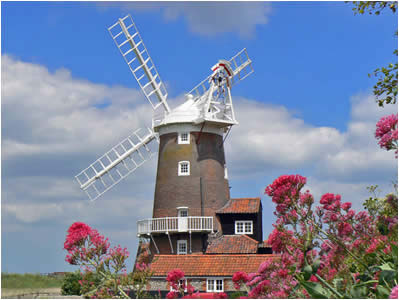
Cley Mill |
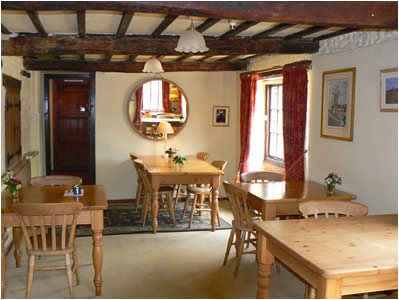
Inside Cley Mill |
On the road south out of Mundesley, you will find Stow Mill; which was built as a flour mill in around 1826 by James Gaze. The mill was operational until 1930, when most of its interior machinery was removed and turned into a small home. In 1960 it was redeemed, when it was selected for preservation by Norfolk County Council and since then it has been maintained and restored by private owners with the help of donations and admission charges. Today, this wonderful mill is open to visitors most days, and there is an adjacent small shop.
Ladders allow you to climb the floors of the mill and view the stone, bin and dust floors. Make sure you get to visit this mill, it is one of the best in Norfolk. |
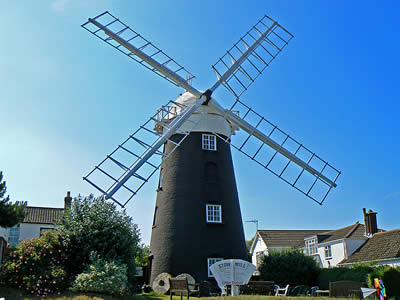
Stow Mill |
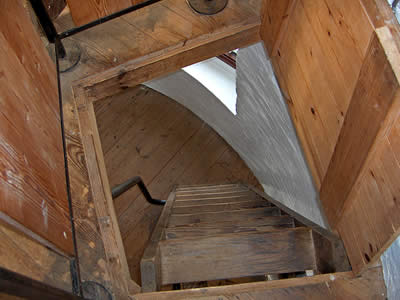
Ladder in Stow Mill |
The windmill that you see in Burnham, worked in conjunction with the watermill. Both were built by Edmund Savory from 1790 to 1816. The windmill is six storeys high and is now used as a private holiday home. The watermill had a wheel that drove 3 pairs of stones and was supplemented by a 16hp condensing steam beam engine powered by a Cornish boiler that drove a further 4 sets of stones. The water wheel and pit wheel were still intact until the 1960s. Both the windmill and watermill are not open to the public. |
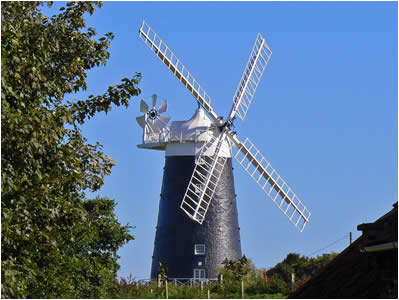
Burnham Overy Windmill |
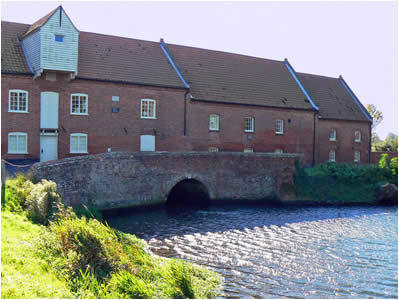
Burnham Overy Watermill |
Standing in the heart of West Norfolk's undulating fields, Bircham Windmill now looks as it did over 100 years ago. At that time over 300 mills ground corn for horse and cattle feed and bread-making in Norfolk. Today, very few windmills are left, and Bircham Mill is considered one of the best still remaining: it is the only windmill in working order in the area open to the public. Visitors can climb the five floors up to the fan stage and, when possible, on windy days, visitors can also see the sails and the milling machinery turning. There are also many items of interest to see in the tearooms, bakery and grounds. |
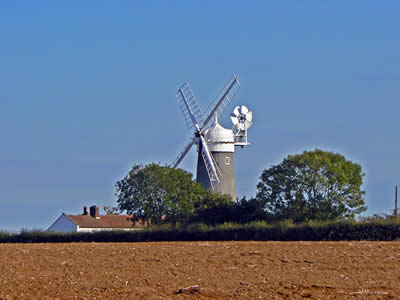
The view over the fields towards Bircham Windmill |
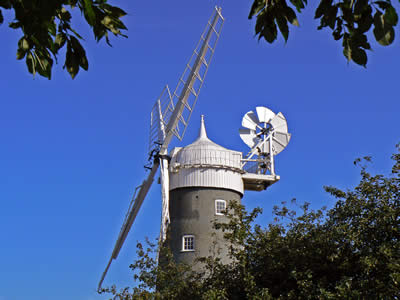
Bircham Windmill |
Horsey Windmill is a five storey windpump on the Norfolk Broads, built in 1912 to pump water out from the surrounding land so that it could be used for agriculture. It was operational until 1943, when it was hit by lightning. The National trust took ownership of Horsey Windpump in 1948 and restored it. It is now open to visitors on certain days in season. You can climb the floors of the pump and see the workings, with steep steps taking you up to the top for a great view back over Horsey! |
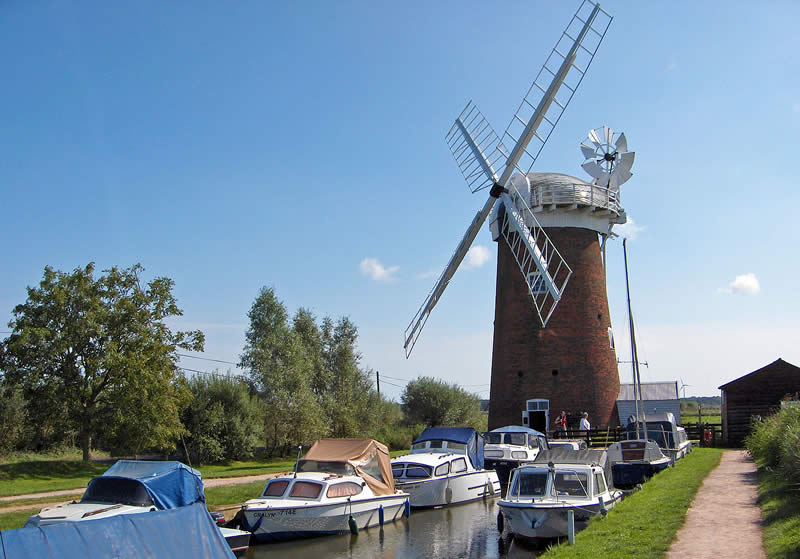
Horsey Windpump |
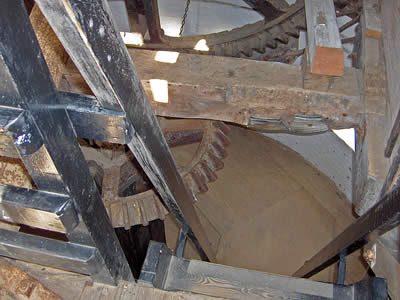
Workings of Horsey Windpump, managed by the National Trust |
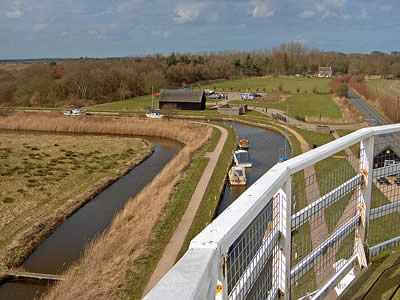
View from Horsey Windpump |
Windmills are a feature of the Norfolk Broads landscape as they were an efficient method of draining the landscape. Nowadays they have all been replaced by electric pumps. Two good examples are at Thurne and How Hill. |
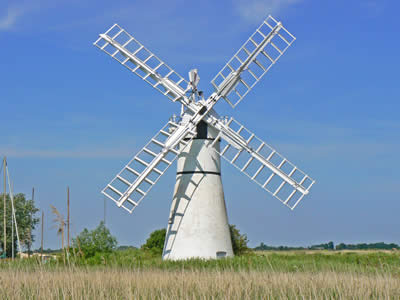
Thurne Mill on the River Thurne |
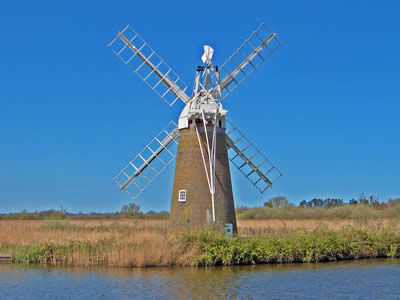
Turf Fen Mill near How Hill |
Hunsett Drainage Mill on the River Ant is probably the windmill on most Norfolk Broads postcards! this is due to its chocolate box picture setting, but actually its quite hard to get to, being at the Northern end of the Norfolk Broads network with no road access (the mill is private and not open to the public). |
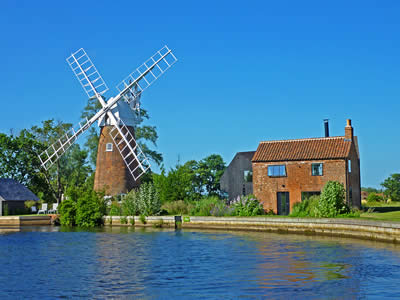
Chocolate box windmill |
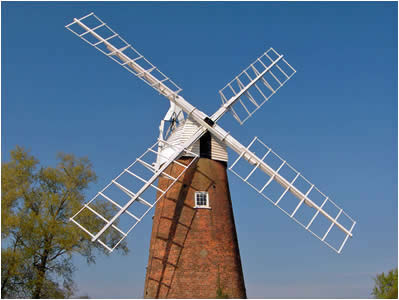
Blades on Hunsett windmill in Norfolk |
Sutton Mill is a 9 storey corn mill near Hickling. It is well worth the walk from the staithe, if only to appreciate just how big this mill is - the tallest surviving windmill in the UK. It was built in 1789 after an earlier mill had burnt down. The mill suffered a serious fire in 1861 and was then hit by lightning in 1875. Its final end came in 1940 when it was again struck by lightning, causing a fire. The mill, which by this time had given up grinding corn and was exclusively producing animal feed, ceased to work from that time. |
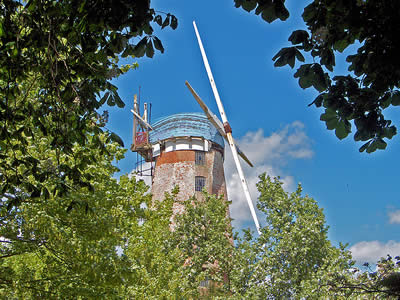
Sutton Mill |
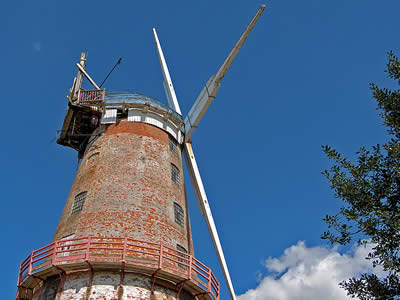
Sutton corn windmill |
Not far from Coltishall, towards Aylsham, you can find Buxton Mill.
The mill was built in 1754 by William Pepper, a merchant living locally. The building was constructed of white painted brick and weatherboard with a pantile roof and has been a prominent landmark in the village for many years. It closed as a working mill in 1970 and is now available as a holiday cottage. A footpath leads along the bank of the River Bure towards Coltishall and makes a lovely walk. |
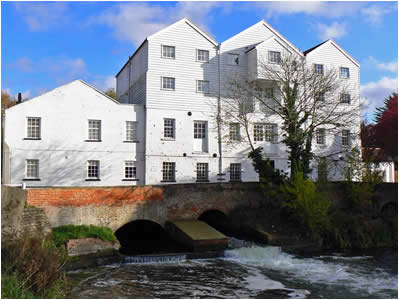
Buxton Mill on the River Bure |
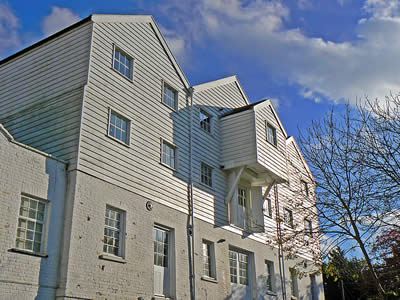
Buxton Mill |
|
NORFOLK PICTURE TOURS |
|
|
|
|
|
|
|
MORE OF OUR WEBSITES |
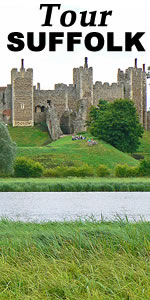 |
 |
 |
| |
|

